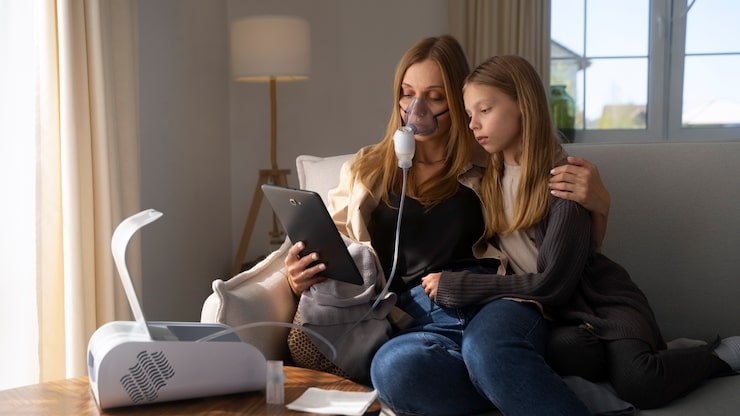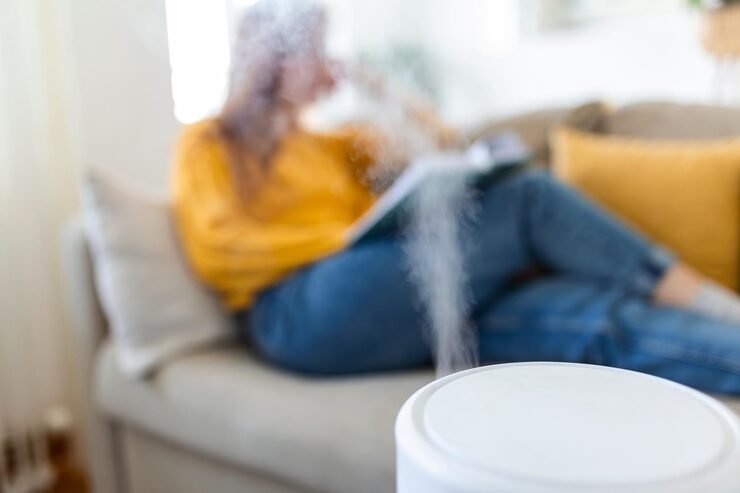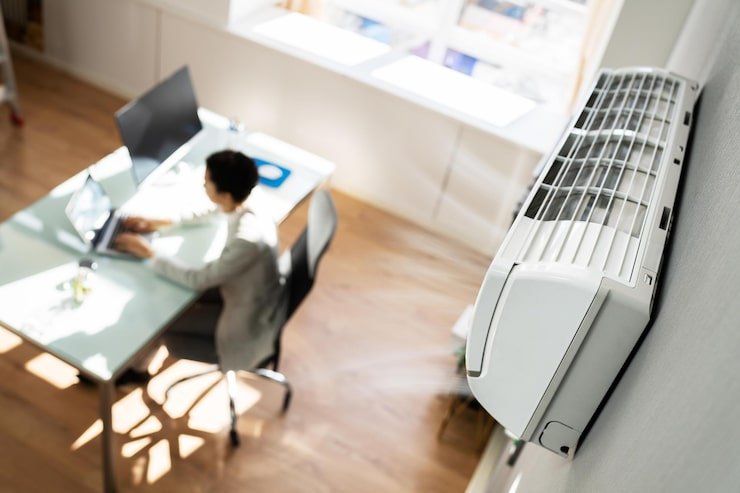From Furniture to Flooring: Common Sources of Formaldehyde VOCs Indoors
- admin323029
- Blog

Indoor air quality plays a major role in your health. Families across Massachusetts and New Hampshire spend long hours inside during colder seasons. This makes it important to understand the hidden pollutants in your home. One of the most harmful indoor contaminants is Formaldehyde & VOCs. These chemicals are found in common household items, from furniture to flooring, and they affect the air you breathe daily.
What Are Formaldehyde & VOCs?
Volatile Organic Compounds, or VOCs, are gases that are released from materials and products. Formaldehyde is one of the most concerning VOCs. It is used in adhesives, finishes, and preservatives. The U.S. Environmental Protection Agency has linked formaldehyde exposure to health issues ranging from irritation to increased cancer risk.
Formaldehyde & VOCs are not limited to industrial spaces. They are inside homes, schools, and offices. Every new carpet, couch, or coat of paint can release VOCs for months or even years. In Massachusetts and New Hampshire, where homes are tightly sealed for warmth, VOCs build up and increase exposure risks.
Furniture: A Primary Source of Formaldehyde & VOCs
Furniture often contains pressed wood, adhesives, and finishes that release VOCs. Items such as desks, cabinets, and bookshelves are commonly made with particleboard or medium-density fiberboard. These materials are treated with resins that emit formaldehyde. Upholstered furniture also contributes VOCs through foams, glues, and fabric treatments.
To lower your exposure, consider furniture labeled as formaldehyde-free or CARB Phase 2 compliant. Solid wood furniture and untreated fabrics are healthier alternatives. When new furniture is delivered, keep rooms well-ventilated for several weeks to allow VOC levels to decline. This step is especially important in Massachusetts and New Hampshire homes that remain closed during winter.
Flooring and Carpets: Everyday VOC Sources
Flooring is another major source of Formaldehyde & VOCs. Laminate, engineered wood, and vinyl flooring often contain adhesives and finishes that release gases. Carpets and rugs may be treated with stain repellents or glues that contribute to VOC levels indoors.
Safer choices include hardwood flooring without chemical treatments, natural fiber carpets, and low-VOC adhesives. Allowing new flooring to air out before installation helps reduce VOC emissions. Professional testing can confirm whether your flooring is contributing to poor indoor air quality.
Paints, Sealants, and Finishes
Paints, sealants, and varnishes are well-known sources of VOCs. Traditional products release strong fumes during application and continue off-gassing for weeks. Formaldehyde & VOCs from these products accumulate indoors, especially in poorly ventilated rooms.
Switching to low-VOC or zero-VOC paints and finishes improves air quality. Many brands now offer safer options that are effective and durable. If you live in Massachusetts or New Hampshire, schedule painting projects during warmer months when you can ventilate your home more effectively.
Cleaning Products and Household Items
Many cleaning products, disinfectants, and air fresheners release VOCs. These chemicals stay in the air long after use and combine with other indoor pollutants. Formaldehyde & VOCs are also found in everyday items such as mattresses, drapes, and insulation.
Choosing natural cleaning solutions and fragrance-free products is one way to lower exposure. For large household items, ask about certifications for low VOC emissions before making a purchase. Over time, these choices add up to a healthier living environment.
Why Formaldehyde & VOCs Matter for Health
Short-term exposure to Formaldehyde & VOCs causes eye, nose, and throat irritation. Many people experience headaches, nausea, and fatigue. Long-term exposure increases risks of asthma, respiratory illnesses, and cancer. Children, seniors, and those with existing health conditions are most affected.
In colder climates like Massachusetts and New Hampshire, families spend extended periods indoors. This means higher exposure levels unless action is taken to reduce VOCs. Testing your home and choosing safer products helps protect your health year-round.
How to Reduce Exposure to Formaldehyde & VOCs Indoors
Practical steps make a real difference in reducing VOC levels. Focus on prevention and ventilation.
-
Buy furniture and flooring labeled as formaldehyde-free or low-VOC
-
Ventilate your home frequently, especially after bringing in new items
-
Use HEPA and activated carbon air purifiers
-
Choose low-VOC or zero-VOC paints and finishes
-
Store household chemicals in sealed containers and away from living areas
These small changes improve air quality and protect your family’s health.
Professional Testing and Support
If you suspect high levels of Formaldehyde & VOCs, professional testing is the best option. Inspectors use specialized equipment to measure concentrations accurately. They provide clear guidance on next steps, from product changes to ventilation improvements.
In Massachusetts and New Hampshire, professional indoor air quality testing is growing in demand. Homebuyers often request these tests during inspections to ensure safe living conditions. Adding VOC testing to your home maintenance plan is a smart choice for long-term health.
Take Control of Your Indoor Air
Formaldehyde & VOCs are hidden dangers in furniture, flooring, and many other household products. By making informed choices, you reduce exposure and create a safer home. Families in Massachusetts and New Hampshire benefit from these steps, especially during long indoor seasons.
Protect your health by scheduling an indoor air quality test today. Learn more about formaldehyde-free options and take action to improve the air inside your home.
FAQs about Formaldehyde & VOCs
1. What furniture items release the most Formaldehyde & VOCs?
Pressed wood furniture, particleboard cabinets, and upholstered items often release the highest levels. Safer choices include solid wood and certified low-VOC options.
2. How long do new flooring materials release Formaldehyde & VOCs?
Laminate, engineered wood, and vinyl flooring release VOCs for months after installation. Proper ventilation and air purifiers reduce indoor concentrations.
3. How do I test my home for Formaldehyde & VOCs in Massachusetts or New Hampshire?
DIY kits provide estimates, but professional testing offers accurate results. Local inspectors use advanced tools to measure levels and suggest solutions.
4. Are low-VOC paints and finishes worth the investment?
Yes. Low-VOC paints and finishes improve air quality and reduce long-term health risks. They are safer for families, especially children and seniors.
5. What are the best steps to lower Formaldehyde & VOCs indoors?
Ventilation, safer furniture and flooring choices, low-VOC paints, and professional testing are the most effective steps for reducing VOC exposure.
Are you worried about the cleanliness of your space?
Let us help you! Cleaning services are our specialty, and we offer a complete range of cleaning and maintenance services. Get a free estimate!




